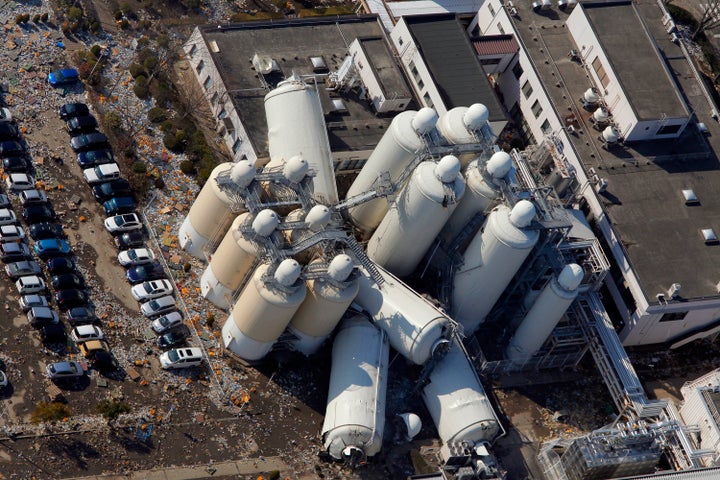
As Japan struggles to recover from the recent earthquake and tsunami, disruptions in the supply chain for electronics are expected to ripple across the globe.
Japan is responsible for 14 percent of global production in computers, and other consumer electronics, according to IHS iSuppli. Japanese makers for certain parts, such as flatscreen panels, have an ever stronger hold on the respective supply markets. Sixty percent of the world's silicon wafers--used in semiconductor chips--are made in Japan. Some analysts predict it could take six months before the tech supply chain returns to normal.
Plants run by Toshiba, Panasonic and Sony have already been struck with damage, forcing shutdowns of several facilities. Sony has closed at least seven factories so far.
American companies with plants in Japan have also reported significant damages to centers. Texas Instruments' Miho plant, responsible for about 10 percent of the company's 2010 revenues, will take until June to reopen. Till then, Texas Instruments has announced plans to transfer 60 percent of manufacturing to other locations.
Factory damage is not the only concern. Infrastructural issues in the country--involving roads and mandated power outages--could delay rebuilding efforts for affected plants, and also slow the speed of transportation for parts. Repairing infrastructure throughout the country could take years.
Just-in-time manufacturing, which lets manufacturers buy and receive parts just before they're needed, has been an important part of electronics production in Japan. The policy lets companies save costs on keeping parts that are not immediately necessary. But the nature of just-in-time manufacturing means that delays in the delivery chain could slow, or even stall, the assembly line for any given device. Though plants may revert to contingency plans, extended delay in manufacturing could leave companies scrabbling to find the parts they need as quickly as they can manage.
The supply chain has about two weeks of excess stock that will offset immediate delays, meaning that shortages will begin to show even greater effects in a few weeks.
The long-term results for the global chain could last even longer, especially as investigations into the state of affected nuclear plants cast uncertainty over electricity supply. Some analysts say at least 10 percent of electricity capacity in the country will remain offline for a few months.
"It's going to be choppy," a Merrill Lynch analyst told reporters. "It's all about Japan's recovery and about finding stuff elsewhere. It's a more complicated process than people think."
Prices for key parts have started to increase following plant shutdowns in Japan. Prices for NAND flash memory, a major storage component for mobile phones and tablets, have increased up to 20 percent following the disaster. Forty percent of NAND chips are made in Japan. Flat panel touchscreens could also face shortages.
And BT resin, a substance used in chip packaging, could take an even harder hit. Ninety percent of global BT resin supply comes from Japan.
As prices for parts rise, some expect there will be shortages for the electronics that use them, like tablets, smartphones, and LCD TVs. Prices for actual finished electronics may feel the pressure as well, with some experts predicting price hikes for those goods. Yet other analysts counter that price increases for consumer electronics are not likely, as upping pricetags might affect consumer demand.
"The Japan earthquake and tsunami could result in significant shortages of certain electronic components, potentially causing pricing for these devices to increase dramatically," a report from iSuppli said.
China, where many electronics are manufactured, has begun to deal with disruptions. Japan exported $176 billon of goods in 2010 to China, making it its largest source of imports. Though it's unclear what exactly the extent of the disruption might be, experts agree that the negative impact will exceed that of the Kobe Earthquake of 1995. Analysts predict costs of reconstruction could be 50 percent higher than in 1995, with costs potentially topping $180 billion, 3 percent of Japan's GDP.
"What you've got here is massive uncertainty on a whole number of fronts and I think that's what we're all grappling with is that we need more clarity, but we're not going to get more clarity as long as things are not yet under control," said Tu Packard, senior economist at Moody's Analytics. "It'll be more challenging this time as compared to Kobe. It didn't affect the nuclear power plants so the story was, in a sense, comparatively speaking, more straightforward."